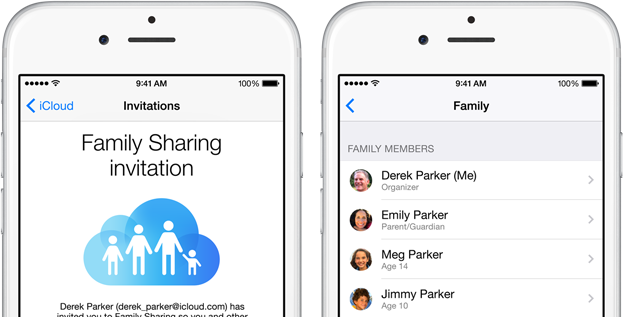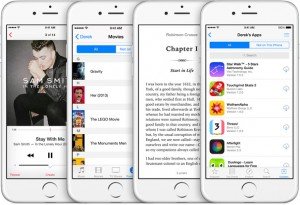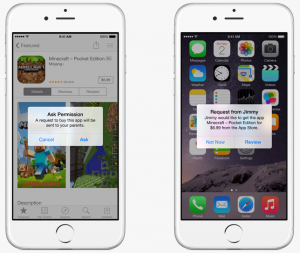 If you happen to live in a home where there are multiple iOS devices, then Apple’s new iOS 8 brings to it a great feature. Family Sharing in essence allows people with different iTunes accounts to share apps, music, movies and TV shows between members in a family, but it brings so much more than just sharing apps and media.
If you happen to live in a home where there are multiple iOS devices, then Apple’s new iOS 8 brings to it a great feature. Family Sharing in essence allows people with different iTunes accounts to share apps, music, movies and TV shows between members in a family, but it brings so much more than just sharing apps and media.
What Can Be Shared?
I’ve already mentioned that apps, music, movies and TV shows can be shared that are purchased through the iTunes Store or App Store. In addition to this, books can also be shared that have been purchase through iBooks. Sharing goes beyond just purchased media though. A common family photo album can be setup with photo stream that will share pictures taken from all the family members iPad and iPhone devices. The calendar can also be shared between members of the family so that everyone is aware of events happening. Finally, the location services can be used to find out where various members of the family are (or at least their devices). I’m sure many teens probably won’t like this last feature though.
Why Its Great For Families
 Setting up sharing allows a family in essence share a single purchase. No longer do you have to either share an iTunes account or setup sharing between multiple iTunes configurations and then sync the apps, music, movies and TV shows to get them on all of the devices. This can be a huge boon for those that need to save some money but still want to share an application in the family.
Setting up sharing allows a family in essence share a single purchase. No longer do you have to either share an iTunes account or setup sharing between multiple iTunes configurations and then sync the apps, music, movies and TV shows to get them on all of the devices. This can be a huge boon for those that need to save some money but still want to share an application in the family.
Let me give a personal example. My son loves to play Minecraft. He has the Minecraft Pocket Edition on his iPad. He really wants to have others log into his worlds to play games and help build things. Now the game retails on the iTunes store for $6.99. If we want to log into the game as a family, it previously would have required us to purchase at least two copies of the game. Now with Family Sharing, we can all use Minecraft on our iPads with just the single $6.99 purchase.
Parental Restrictions
 Another important aspect of the Family Sharing is the ability to control what gets loaded onto your children’s devices. With the old system, you could do things like turn off the Apps Store or restrict it so there were not allowed app or in-app purchases. The new system establishes parent and child accounts. A parent can then setup various restrictions on the child’s account. This can limit the content they can view or what they can purchase.
Another important aspect of the Family Sharing is the ability to control what gets loaded onto your children’s devices. With the old system, you could do things like turn off the Apps Store or restrict it so there were not allowed app or in-app purchases. The new system establishes parent and child accounts. A parent can then setup various restrictions on the child’s account. This can limit the content they can view or what they can purchase.
This is extremely useful when you have a younger child that would basically just want to buy anything. With the new system, the child has the ability to browse the iTunes and App stores for things he might want. Then, if she wants to get it, she can submit a request which goes to the parents in the Family Share. Then the parents can look at the app notifcation to see how much it costs and what it is about and then either approve or deny the purchase.
Not Supported in iTunes on PC/Mac
The one big flaw right now with the Family Sharing system is the lack of support for iTunes on PC and Mac. While you can access all the various apps, books, music, movies and TV shows through the iTunes app on the iPad and iPhone, the same is not true for the computer application. This is a bit annoying for those that also tend to share media between computers.
For example, I have an older Mac Mini that i use as a home theater PC primarily for my son to watch movies and all. Often these videos are digital downloads that are included with the purchase of the DVD or Blu-ray movies. These are then registered to my iTunes account. It would be extremely convenient to setup the Mac Mini with his account and then use Family Sharing to download those movies to that computer. Instead, I have to manually copy between the systems using the standard Home Share system.
Setting Up Family Share
While Family Sharing is a huge benefit, it does take some time to setup the feature. Because it has a lot of steps, I’m not going to actually go into the process and instead defer to my wife’s article on Laptop Magazine’s blog.
